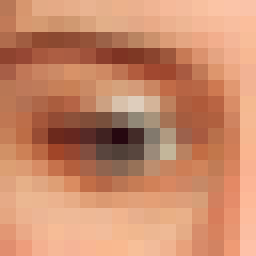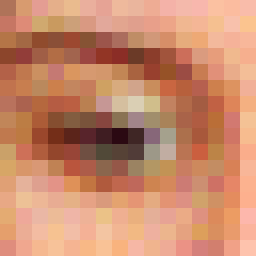|
|
|
Noise is no image
"I can't receive anything on the television, just noise"
Noise is a combination of tones, and every noisy frame is unique (probably), but we see nothing, just noise. (the brain sees/recognizes)
If noise isn't image, then when busy on image-compression; we should exlude noise!
One pixel
One pixel can't have noise. Although very light and dark lightness and vivid colors are rare (in relative data), all tones are possible.
What is noise?
Pure noise is a random combination of all possible tones. The average contrast with neighboring pixels is about 50%
A noisy-image is a combination of an image and noise.
Noise in digital photos is caused by the image sensor, which is less than perfect, especially at high iso settings (high light sensitivity). Scans from film are wors: sensor noise + film grain.
What is image?
All contrasts in an image (without noise) represents something. Is very hard for a 2005 computer to known what is "something" and what is noise. The human brain has less trouble recognizing noise from image.
Madness!
A motioncamera's digital images have always some noise in it, even at low iso settings. As a result; each image is different. Imagine a motioncamera on a tripod at a studio scene with no action whatsoever, shooting at 25 frames per second at a resolution of 1366 * 768 pixels, and each pixel being 24 bits. That's 25178112 bits per frame (about 3 MegaByte).
Without compression, a one minute shot wil be 25178112*25*60 = 37767168000 bits = about 4502 MegaBytes! While this is crazy because the scene did not change a bit whatsoever! The scene should be saved just once.
How much percent of all possible combinations are noise or noisy?
I think more than 99%, I think much more than 99.99%, I think removing the noise is probably the most important key to image compression.
|
|

Image
|
|

Noisy image
|
Simply flattening single pixel peaks, destroys details too. Each pixel should be analyzed on how likely its contrast is detail, noise, or a combination of both. Most often, there's one type of noise equally spread over the whole image. Areas that are out of focus (blurred, unsharp) are where the type of noise can be analyzed best, and an image specific noise profile can be build from.
Most noise is on pixel level, but noise can also be found in a bigger than pixel size. Using different "spatial frequency ranges", larger noise can also be reduced. Noise filtering is not done in "RGB" but in "Lab" or "Y, Cr, Cb" which are color models that separate luminous from color information.
When many pure-noise frames are merged to one frame, the average tone per pixel will become about 50% gray; the noise is almost gone. When a movie camera is on a tripod, all parts of a scene that did not change for a few seconds can be merged, removing the noise almost completely. Merging less than a second (less than 25 frames) will work too, but; the more frames, the less noise. There is some damage though; the averaged noise is like a gray layer, making the image a bit.. gray.
|
|
|

